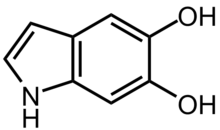The Magnetic Neuromelanin Matrix

Article originally posted in Human Frequencies, on November 22, 2017.
NEUROMELANIN AND THE SQUID
Bolzoni and colleagues from Parma, Torino, and Varese, have studied the magnetic properties of human neuromelanin granules, and in 2002 published Magnetic investigations of human mesencephalic neuromelanin. Through a careful protocol, -ceramic blade used to cut the tissue and several thoughtful practices to prevent contamination- they could display electrodes in between neuromelanin grains, and apply a magnetic field that was being continually measured. Their objective is to give evidence that iron is not simply chelated, but is rather organized in a three-dimensional network. The team also wanted evidence to support that this network has magnetic properties. The device used was a SQUID; made to detect the extremely subtle magnetic fields; this is the same device that has been used at some Energy Healing and Biofield Therapy studies, as the one by Zimmerman exposed at the Reiki Frequencies post.

MAGNETICALLY COUPLED IRON DOMAINS
Neuromelanin contains different types of iron domains, most of it being antimagnetic. They could determine that about 94% of the total iron is antimagnetically coupled, therefore does not intervene or create any magnetic field. The interesting results come from the detection of Magnetic Coupled Iron Domains. These are just 0.4% of the total iron pool. It’s as easy as thinking of the 94% as big grains that are not active, and very few subgrains extruding from the bulk, these ones are parallelly aligned among themselves. This small pool compensates the numbers with qualities, as Bolzoni and colleagues could determine that these subgrains are superparamagnetic. This refers to the ability to increase the magnetic field applied. This could mean an important relationship between the magnetic neuromelanin matrix and the electromagnetic human field, as well as the brain waves and other biofields.
PRESENCE AND DISPOSITION OF MAGNETIC IRON
At Neuromelanin Rising I stated the evidence about its detoxifying properties (by removal of heavy metals) and also theorized about how the correct disposition (matrix) of metals hold by neuromelanin might optimize the electromagnetic flow within those areas in the brain. Well, Bolzoni and colleagues might have contributed on that aspect, by detecting parallelly aligned superparamagnetic clusters of iron. But it’s not only the correct disposition of magnetic iron but also the presence of it, as some diseases have a lack of neuromelanin, which turns into reduced magnetic contribution and enhancement.
A RELATION WITH PARKINSON DISEASE
Though it’s still not known if it’s a cause or a consequence, in Parkinson’s disease there is a progressive reduction of the paramagnetic properties of the parallelly aligned magnetic iron. The effects are clear, as Bolzoni and his team stated: there exist magnetically ordered domains whose size and number are reduced on Parkinson’s Disease. The total magnetization of the neuromelanin clusters is also diminished in this disease.
CONCLUSION
Not many years ago, neuromelanin was considered a vestigial molecule without any utility or purpose. Nowadays it is known to have detoxifying properties by sequestering heavy metals, and to have superparamagnetic properties.
Go Neuromelanin!